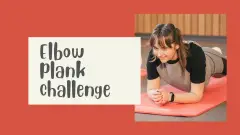This 30 day abs and arms challenge uses 4 exercises that work abs and arms at the same time. It’s a split challenge, with the 2 plank exercises alternating with push ups and mountain climbers. If you’re a complete beginner, you may find these exercises quite hard, in which case try the push ups challenge for beginners and the elbow plank challenge first.
Notes on this workout
Please read these safety guidelines before you do the workout. Also please note that these exercises involve holding muscles in a static contraction, which can cause an increase in blood pressure. The workout is therefore not advisable for anyone who suffers from high blood pressure.
You’ll be more comfortable with cushioning for your knees when doing the push ups, ideally an exercise mat. See an exercise mat buying guide here.
30 day abs and arms challenge reps and holds chart
The chart gives you the number of repetitions for the push ups and mountain climbers and the hold times for the planks each day. Instructions for the exercises are below the chart.
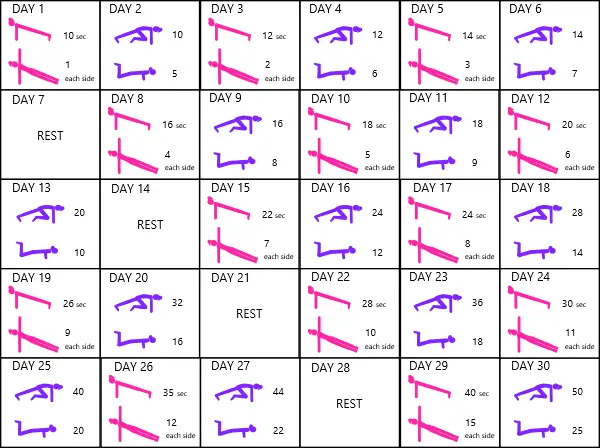
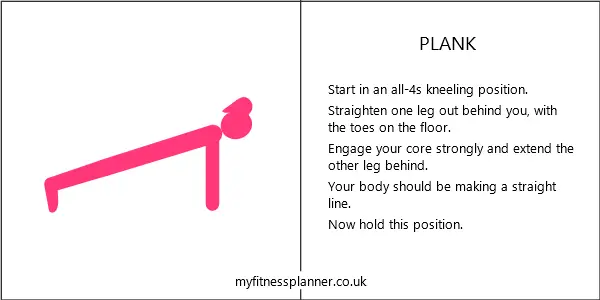
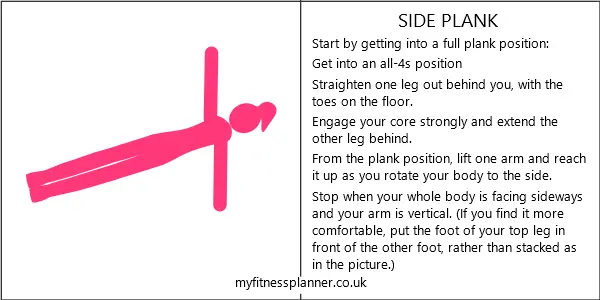
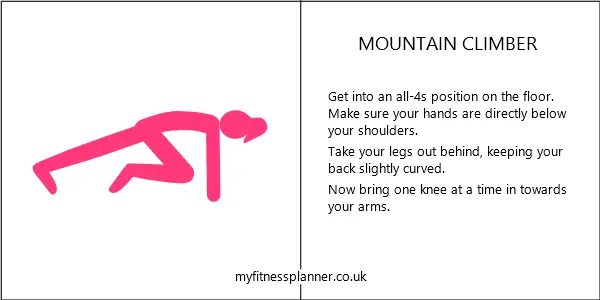
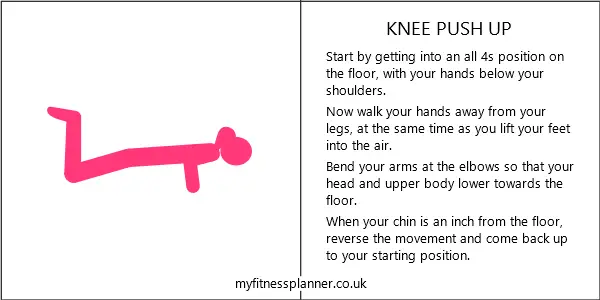
About the abdominal muscles
There are 4 layers of abdominal muscle, each with different functions.
The rectus abdominis
The most superficial (near the surface) of the abdominal muscles is the rectus abdominis, commonly known as the “six-pack.” This muscle runs vertically down the front of the abdomen and is responsible for flexing the spine. It is active in movements like crunches and sit-ups.
The oblique muscles
The middle two layers of abdominal muscles are the internal and external obliques.
The external obliques run diagonally downward towards the pelvis. The internal obliques, on the other hand, lie beneath the external obliques and run in the opposite direction, diagonally upward towards the ribcage. Both are active in rotation of the trunk and bending to the side, as well as compression of the abdominal cavity (that is, flattening the abdominal area).
The transversus abdominis
This is the deepest of the abdominal muscles and is only involved in abdominal compression – it does not play a part in movement. Core abdominal training focuses a lot on the transversus muscle. When it’s strong it flattens the abdominal area and supports the spine, protecting it from injury.
Related to 30 day abs and arms challenge
Challenge FAQs
The first day of the challenge should feel like it needs a bit of effort, but not too much. If you really struggle with day 1, then you probably won’t get through the challenge. The idea with the challenges on this site is that the first few days get you used to the exercises and the daily habit. Usually about halfway through the challenge the effort levels start to increase more quickly.
Avoid challenges that increase effort levels very quickly – they’re simply not realistic. It’s unlikely that, for example, you would be able to increase how many squats you are able to do by 10 a day for 30 days, or increase your plank hold time by 10 seconds a day for 30 days.
In general, allowing muscles 48 hours between workouts is good because it gives our bodies time to recover and adapt. Challenges are generally short workouts and for a limited period of time (usually 30 days), so not having many rest days won’t be a problem. With challenges that alternate exercises each day, it’s not an issue, because you’re using different muscles.
Fitness improvements don’t always happen in a predictable way. Sometimes we’re just not as strong or energetic for no apparent reason, or we hit a plateau. If you get to a point where you’re struggling to complete the day’s challenge, you can try one of the following:
- Take a couple of days off and start again where you left off
- Do the challenge on alternate days rather than every day
- Instead of increasing the effort every day, stay at the same level for 2 or 3 days and then go onto the next day of the challenge
Obviously these solutions mean the challenge will last longer, but you’ll still benefit from doing it.
